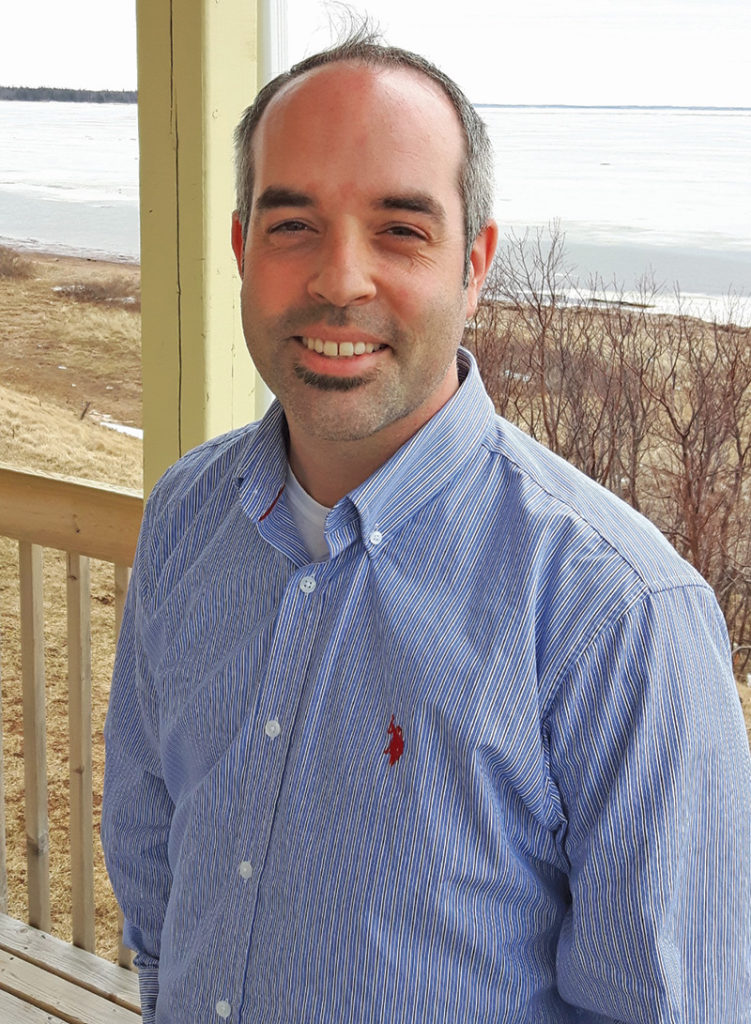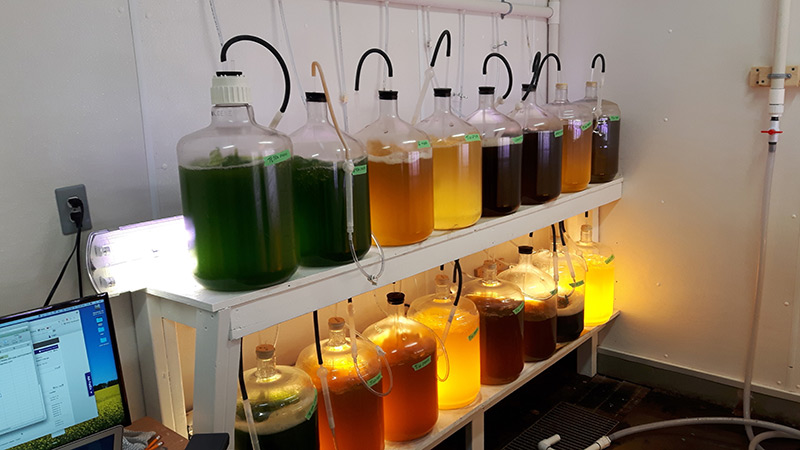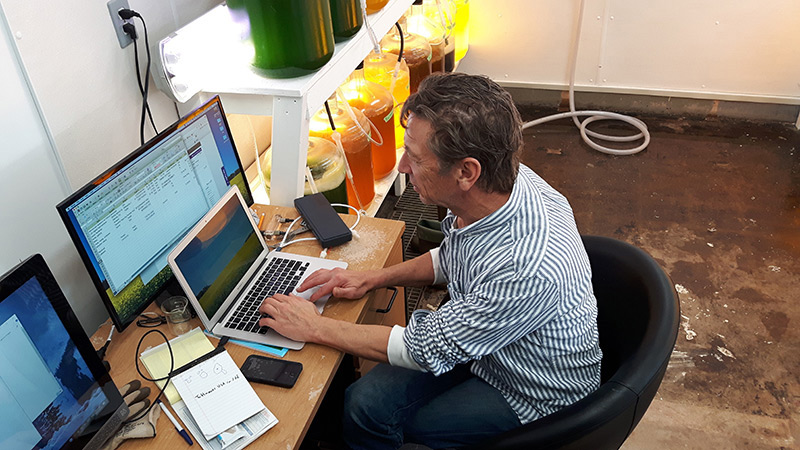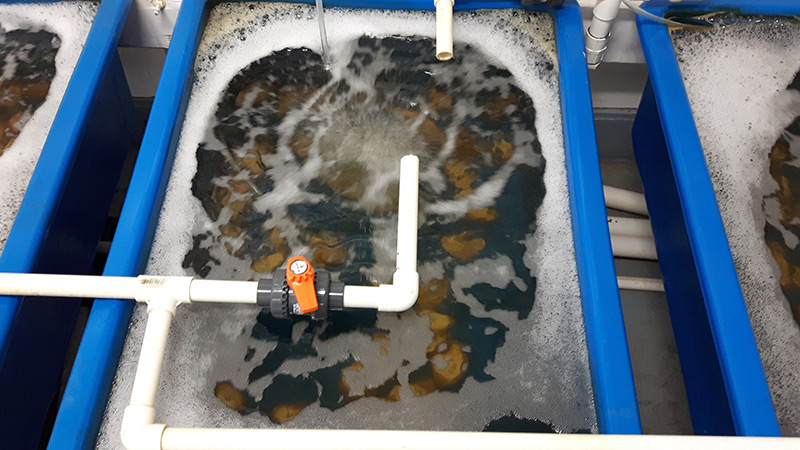PEI’s only shellfish hatchery will be owned and operated by Lennox Island First Nation
After 10 years as a storage shed, the facility that saved the Island oyster industry back in the 1930s is rising from the dead.
In 1930, a laboratory was established on the Bideford River in Ellerslie to help restore the oyster fishery in Prince Edward Island after the oyster beds were essentially stripped of fish. The timing was fortunate, because a few years later, a disease hit the Maritime’s struggling bivalve industry and the spat stored at the facility by biologist Alfred Needler was used to re-stock the region’s exhausted oyster beds.
After years of decline and eventually closure, the facility, now known as the Bideford Marine Centre, was acquired by Lennox Island First Nation and is being reborn as PEI’s only shellfish hatchery.
And the reputation of the new facility is spreading despite only being up and running since December.
“Word has already gotten out,” Lennox Island Development Corporation executive director Mike Randall said. “We’ve been receiving requests for seed already.”

Mike Randall, executive director of Lennox Island Development Corporation. // Photo Credit: Rod Weatherbie
The hatchery won’t start selling until the team is sure they have a healthy, disease-resistant product.
By the early 1900s as many as 500 boats were engaged in the oyster fishery in Malpeque Bay. Oyster stocks declined to an extent that oysters were brought in from New England to boost the industry. These oysters were the likely source of what was called Malpeque Disease. The disease devastated the industry with a mortality rate over 90 per cent. Oysters which appeared resistant to the disease were used to re-seed depleted oyster beds. The development of the oyster research facility at Ellerslie on Bideford River led to a rebirth of the oyster industry.
The agent causing Malpeque Disease is still present and virulent for weaker oysters, but there hasn’t been an outbreak since the early 1960s. The cause of the disease is still being studied.
The goal of this latest iteration of the hatchery is to start selling seed in June or July of this year.
Once the hatchery has established the oyster seed production process, it will diversify into new species of shellfish seed production, including bay scallops, sea-scallops, quahogs, and soft-shell clams.

Algae tanks. // Photo Credit: Rod Weatherbie
“There is a lot of room in the building for us to physically grow into,” Randall said. “We want to move into researching bivalve disease and prevention and we also want to expand our seed offerings.”
Right now the hatchery is concentrating on oysters, something well within the wheelhouse of all those involved in the venture. “For now we are sticking with oysters. We want to master that. There is money in oysters more so than other products like quahogs or scallops.”
Hatchery consultant Matthew Salo (who has seemingly done everything from farming, artificial intelligence research, programming, to engineering) is here in Prince Edward Island setting up the hatchery after setting up similar aquaculture operations in the US and British Columbia. He said the facility is well positioned to succeed.

Hatchery consultant, Matthew Salo.//Photo Credit: Rod Weatherbie
“My background is in programming originally, but I’ve been working in aquaculture for a long time now and have helped set up a number of facilities in BC where everything is hatchery based,” he said.
Due to the work of Salo, hatchery manager Steven Palmer, a technologist, and a couple of labourers, the hatchery has already produced forty million larvae from just one spawning and seven female oysters (oyster are protandric, they are able to produce both sperm and egg and start off as male before becoming female).
The hatchery solves the lack of local bivalve seed production and will also provide the Lennox Island Band with income and some employment for band members. The band is intimately knowledgeable about the shellfish industry to begin with so this is a perfect fit in many ways said Randall.
“We will have Island-grown seed. Right now most seed used on the Island is either wild or imported from New Brunswick.”
He said the hatchery will support all of PEI and that conservation and sustainability of natural resources has always been at the core of Aboriginal beliefs.
“This project further highlights the importance of First Nations as stewards of the land and of the waters.”
The Band wants the facility to start with the business of selling seed and then expand into education and research and development.
Randall said the mix right now is perfect. “We have the right people, the right building, the right water, and the right equipment. Soon we will have the right product.”

Brood stock. // Photo Credit: Rod Weatherbie
- SCOOPS FOR ALL - May 19, 2020
- BEHIND THE LINE - May 2, 2020
- BANJO: NOT JUST A MUSICAL INSTRUMENT - March 1, 2020
- BEHIND THE LINE - March 1, 2020
- BEHIND THE LINE - February 1, 2020
- WINNING WITH BEAUTIFUL BEER - January 1, 2020
- BEHIND THE LINE - January 1, 2020
- BEHIND THE LINE - December 2, 2019
- BEHIND THE LINE - November 1, 2019
- NEW VIDEO COOKBOOK - October 1, 2019


